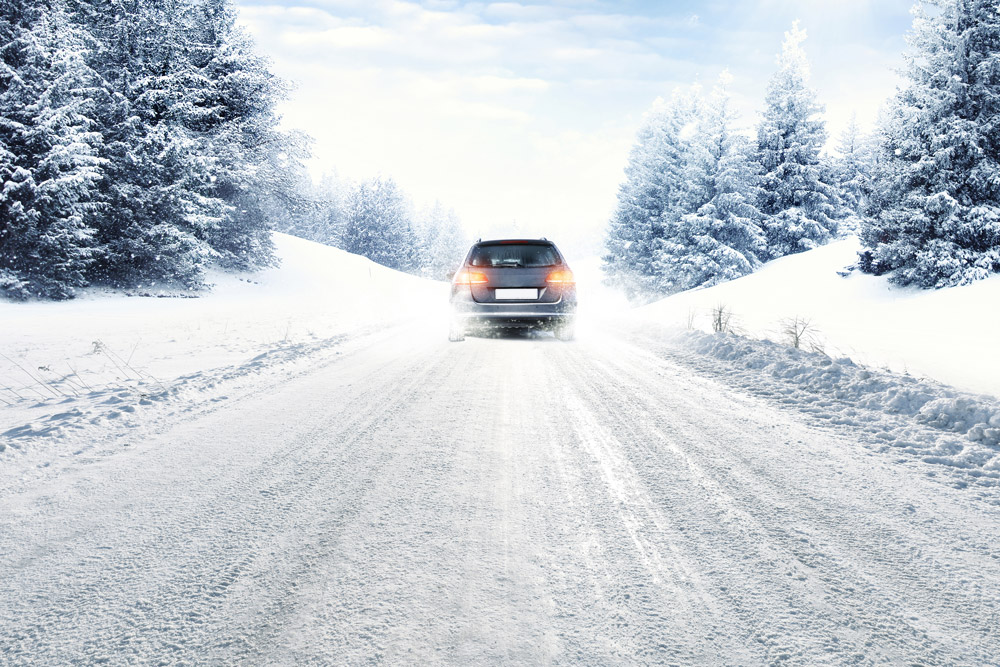
Our number one tip for driving in the snow is to walk back inside your house, sit on the couch, pull a blanket over yourself and turn on Netflix. In other words, stay home and stay warm!
On a more serious note, there are some ways you can prepare to drive safely in snowy and icy conditions. Here are some actual tips from the Jerome car repair team at Master Muffler, because if Idahoans don’t know how to drive in the snow, who does?
Prep Your Vehicle
Before you even get behind the wheel and attempt to navigate snow and ice, prep your vehicle. We don’t want to see you at Master Muffler for car repair this winter if you can avoid it!
Snow Tires
Look into swapping out your tires for studded snow tires. Some roads, such as through canyons, do require snow tires for passage. So if you’re commuting to work through rough conditions or just heading up to the slopes for a day of skiing, make sure your tires are up to the task. Our Jerome car repair crew can help if you have questions about which tires would be best for your vehicle this winter.
Chains
Another option for prepping tires for winter is chains. They can be draped around your tire to provide additional traction to all-weather treads. Snow chains can be a bit tricky to put on, so if you plan to use them, practice before they’re necessary so you’re prepared.
Windshield Washer Fluid
Don’t be blinded by the light this winter! Make sure you have washer fluid that won’t freeze when the temperature drops. If you attempt to clean off your windshield with a spray of regular washer fluid, you’ll be faced with a splotchy, icy coating on your windshield that obscures your vision.
Lights on for Safety!
Did you know it’s a good rule of thumb to have your headlights on if weather conditions require windshield wipers? If visibility is limited due to rain or snow, chances are having your headlights on is also going to help. Some states do require headlights to be on if the wipers are going, and you can see a list of them HERE. Check your vehicle to see if it’s one that features automatic lights which turn on and off according to sensors that gauge driving conditions (i.e. day vs night). If not, you could simply get into the habit of turning on the lights when you turn your key in the ignition.
Clear the Windows
Never rely on the cabin temp to defrost your windows when there’s ice on the outside. The vents inside are good for defogging the insides of the windows, but you should always scrape or sweep ice off the windows with the proper tool before driving.
Give the Gift of Time
The second tip for driving in winter weather is to give yourself plenty of time to get to your destination. Even if you feel comfortable driving through slush and over ice, other drivers may not be, and that may present you with some roadblocks.
The road may be clear of accidents and snowdrifts, but black ice should always be top-of-mind when you’re driving this winter. To avoid spinning out on a patch of unseen ice, plan to drive slower than usual, and always be cautious when speeding up and slowing down. Be aware that elevated roads, such as bridges or overpasses, are more prone to ice than roads insulated by earth underneath, so adjust your speed and maneuvering choices accordingly.
Modify Maneuvers
Speaking of maneuvering, here are some ways you can alter your driving habits to accommodate for snow and ice on the road.
Give More Space
If you usually leave about four seconds between you and the car you’re following, increase that lead time to at least six seconds. In the event the car in front of you loses control, you’ll have more reaction time to help you maneuver your vehicle to safety.
Pump the Pedals
When your car loses tractions, slamming down on the accelerator or the brake pedal most likely won’t help. Continuous acceleration will cause your tires to continuously spin, potentially digging yourself deeper in the snow or skidding your car across the ice.
Likewise, non-stop pressure on the brakes might just turn your car into a sled. Try, instead, to depress the brake pedal in regular intervals if you’re having trouble coming to a stop. It can give your tires a moment to search for traction between brake activation.
Our Jerome car repair mechanics also recommend having a winter car kit so you’re prepared in the event of snow-related mishaps. Be sure you have a warm blanket, snacks, water, and a charger for your phone so you can call for help if need be. Include a flashlight, extra batteries, and a shovel as well. We hope you won’t need these tools, but it’s better to be safe than sorry.
Related Posts
As an EV owner, understanding your vehicle's battery is critical. From its capacity to its lifespan, and everything in between, we'll guide you through what you need to know to optimize your EV experience. So buckle up and get ready - we're about to shed some light on the electrifying world of EV batteries. What [...]
If your car is running hot, it can be a sign that something’s not right with your engine. Fortunately, diagnosing the cause of an overheating engine isn't too difficult if you know what to look for and how to address it. Keep reading if you want to learn the most common issues that occur when [...]
Your vehicle's exhaust system serves a critical role in managing the byproducts of the combustion process and ensuring optimal engine performance. The appearance of colored smoke from the exhaust pipe, either when stationary or accelerating, can provide valuable clues to underlying mechanical issues. What is a car exhaust? A car exhaust is a system [...]





